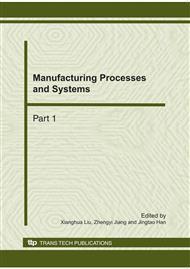p.186
p.191
p.195
p.200
p.204
p.210
p.215
p.219
p.223
The Effect of Calculating Gridding Size on the Formation of Multimode Penetrator
Abstract:
Aim at the problem of Ansys/LS-DYNA software simulating in the shaped charge modeling, this paper studies the influence of calculating gridding size on the multimode penetrator forming. It can be found that when the gridding size is 0.028 times the charge caliber or less, the formation of penetrator can be good with the trail result. It obtained the change curve of the model nodes and the calculating time of certain computer with the size of gridding. When the gridding size is from 0.022 to 0.028 times the charge caliber, the model nodes diminish 30.8%, and the calculating time decreases 42.9%. It obtains the effects of calculating gridding size on the multimode penetrator formation parameters, such as velocity and length-diameter ratio. The simulation results were validated through X-ray imaging experimentation. Both results are in good agreement.
Info:
Periodical:
Pages:
204-209
Citation:
Online since:
October 2010
Authors:
Price:
Сopyright:
© 2011 Trans Tech Publications Ltd. All Rights Reserved
Share:
Citation:


